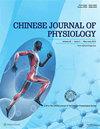Raspberry ketone promotes FNDC5 protein expression via HO-1 upregulation in 3T3-L1 adipocytes
IF 1.6
4区 医学
Q4 PHYSIOLOGY
引用次数: 2
Abstract
Obesity is a global health problem and a risk factor for cardiovascular diseases and cancers. Exercise is an effective intervention to combat obesity. Fibronectin type III domain containing protein 5 (FNDC5)/irisin, a myokine, can stimulate the browning of white adipose tissue by increasing uncoupling protein 1 (UCP1) expression, and therefore may represent a link between the beneficial effects of exercise and improvement in metabolic diseases. Thus, upregulating the endogenous expression of FNDC5/irisin by administering medication would be a good approach for treating obesity. Herein, we evaluated the efficacy of raspberry ketone (RK) in inducing FNDC5/irisin expression and the underlying mechanisms. The expression of brown fat-specific proteins (PR domain containing 16 (PRDM16), CD137, and UCP1), heme oxygenase-1 (HO-1), FNDC5, and peroxisome proliferator-activated receptor gamma coactivator 1-alpha (PGC1α) in differentiated 3T3-L1 adipocyte was analyzed by western blotting or immunofluorescence. The level of irisin in the culture medium was also assayed using an enzyme-linked immunosorbent assay kit. Results showed that RK (50 μM) significantly induced the upregulation of FNDC5 protein in differentiated 3T3-L1 adipocytes; however, the irisin level in the culture media was unaffected. Moreover, RK significantly increased the levels of PGC1α, brown adipocyte markers (PRDM16, CD137, and UCP1), and HO-1. Furthermore, the upregulation of PGC1α and FNDC5 and the browning effect induced by RK were significantly reduced by SnPP or FNDC5 siRNA, respectively. In conclusion, RK can induce FNDC5 protein expression via the HO-1 signaling pathway, and this study provides new evidence for the potential use of RK in the treatment of obesity.树莓酮通过上调HO-1促进3T3-L1脂肪细胞中FNDC5蛋白的表达
肥胖是一个全球性的健康问题,也是心血管疾病和癌症的危险因素。运动是对抗肥胖的有效手段。纤维连接蛋白III型结构域含有蛋白5 (FNDC5)/鸢尾素,一种肌因子,可以通过增加解偶联蛋白1 (UCP1)的表达来刺激白色脂肪组织的褐化,因此可能代表了运动的有益效果与代谢疾病的改善之间的联系。因此,通过给药上调内源性FNDC5/irisin的表达将是治疗肥胖的一个很好的方法。在此,我们评估了覆盆子酮(RK)诱导FNDC5/irisin表达的功效及其潜在机制。采用western blotting或免疫荧光法分析3T3-L1脂肪细胞中棕色脂肪特异性蛋白(PR结构域16 (PRDM16)、CD137和UCP1)、血红素加氧酶-1 (HO-1)、FNDC5和过氧化物酶体增殖物激活受体γ辅助激活因子1- α (PGC1α)的表达。用酶联免疫吸附测定试剂盒测定培养基中鸢尾素的水平。结果表明,RK (50 μM)显著诱导分化的3T3-L1脂肪细胞中FNDC5蛋白表达上调;然而,培养基中的鸢尾素水平不受影响。此外,RK显著提高了PGC1α、棕色脂肪细胞标志物(PRDM16、CD137和UCP1)和HO-1的水平。此外,SnPP或FNDC5 siRNA分别显著降低了RK诱导的PGC1α和FNDC5上调及褐变效应。综上所述,RK可通过HO-1信号通路诱导FNDC5蛋白表达,本研究为RK在肥胖症治疗中的潜在应用提供了新的证据。
本文章由计算机程序翻译,如有差异,请以英文原文为准。
求助全文
约1分钟内获得全文
求助全文
来源期刊
CiteScore
2.30
自引率
5.60%
发文量
36
审稿时长
6-12 weeks
期刊介绍:
Chinese Journal of Physiology is a multidisciplinary open access journal.
Chinese Journal of Physiology (CJP) publishes high quality original research papers in physiology and pathophysiology by authors all over the world. CJP welcomes submitted research papers in all aspects of physiology science in the molecular, cellular, tissue and systemic levels. Multidisciplinary sciences with a focus to understand the role of physiology in health and disease are also encouraged.
Chinese Journal of Physiology accepts fourfold article types: Original Article, Review Article (Mini-Review included), Short Communication, and Editorial. There is no cost for readers to access the full-text contents of publications.

 求助内容:
求助内容: 应助结果提醒方式:
应助结果提醒方式:


